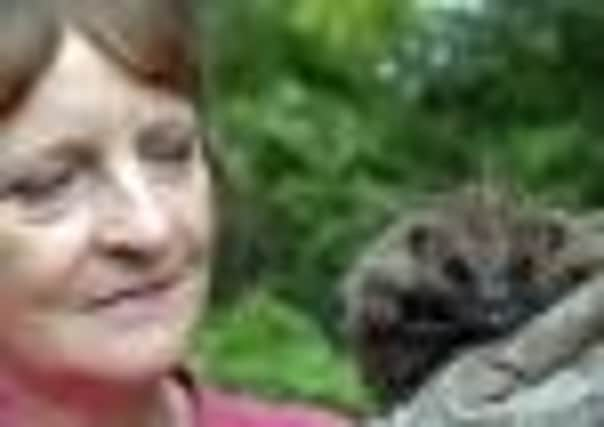Loss of species raises fears of nature being out of balance


RED squirrels, hedgehogs and Scottish wildcats are among the British animals most under threat of extinction, according to a new review of the UK’s native wildlife
The examination of UK species finds that birds including the cuckoo and turtle dove, as well as creatures such as the natterjack toad and brown hare, are also among those most at risk of disappearing in the next 40 years. Researchers have drawn up a list of the top 10 species most in danger of extinction in the UK in a report for wildlife TV channel Eden.
Advertisement
Hide AdAdvertisement
Hide AdDr Toni Bunnell, the zoologist from York who led the research which looked at rates of decline and reasons for creatures being under threat, says some of the wildlife on the list may be a surprise to members of the public. But they had to consider, she said, when was the last time they saw a hedgehog or heard a cuckoo.
“In my own case, I think the last time I heard a cuckoo was at least five years ago.”
While some of the species, like hedgehogs, are still plentiful in the UK – there are estimated to be about one million left across the British Isles – high rates of decline mean they are at serious risk.
The species calculated to be at greatest threat of extinction is the red-necked phalarope, a bird which has just 36 breeding pairs in the far north of Scotland and which has seen numbers reduced by a quarter in a decade. The black-tailed godwit has 50 breeding pairs left, and has seen numbers decline by a third in 15 years.
Advertisement
Hide AdAdvertisement
Hide AdDr Bunnell said most of the species on the list were at risk from habitat loss while some were also affected by other factors. The red squirrel is threatened by the spread of its grey cousin, which competes with the red and spreads disease which kills it off.
The report warns that red squirrels may have vanished from the UK in 20 years’ time. Scottish wildcats are threatened as a result of interbreeding with domestic cats, while the beautiful capercaillie and the natterjack toad are being affected drastically by climate change.
While action was being taken for many of the species most at risk, some were threatened by intensive agriculture, which would continue to pose a problem. Hedgehogs are mostly killed by mowing and strimming, she says. The answer is to set aside unmowed areas for them.
“More can be done in terms of habitat preservation, finding out what different species need and trying to provide enough habitat for them to survive in,” Dr Bunnell added. She says it’s not enough to provide “little oases” of habitat; species also needed wildlife corridors to connect those areas.
Advertisement
Hide AdAdvertisement
Hide AdConservation work can help reverse declines – for example, otters were pushed to the brink of extinction but with the help of action to increase their population they are now widely found across the UK, including in the rivers of North Yorkshire.
“We were asked to specify the 10 most endangered, but could easily have added a lot more species,” says Dr Bunnell. “The great crested newt and the bank vole are just two others that are under serious threat.
“Some people might say ‘well, so what if we lose the odd species?’ but the losses mean something is wrong in our countryside, and nature is out of balance. We don’t want things to go as far as they have in China, where pesticides have killed off bees to the extent that plants are having to be pollinated by hand.”
Hedgehogs and a wide spectrum of bird life are seen as good indicators of a healthy environment, but how do we all help to conserve wildlife? Supporting conservation groups is one way, says Dr Bunnell.
Advertisement
Hide AdAdvertisement
Hide Ad“People can contact their MP too, to get them to raise awareness of the threats to our wildlife. And you can make a garden a good place for hedgehogs, say, by putting out water and dried food such as kitten biscuits or dried meal worms, making access points to other gardens, and making piles of dried leaves for them to nest in.”
Species that are most at risk
1 Red-necked phalarope
2 Black-tailed godwit
3 Scottish wildcat
4 Capercaillie
5 Cuckoo
6 Red squirrel
7 Turtle dove
8 Natterjack toad
9 Brown hare
10 Hedgehog